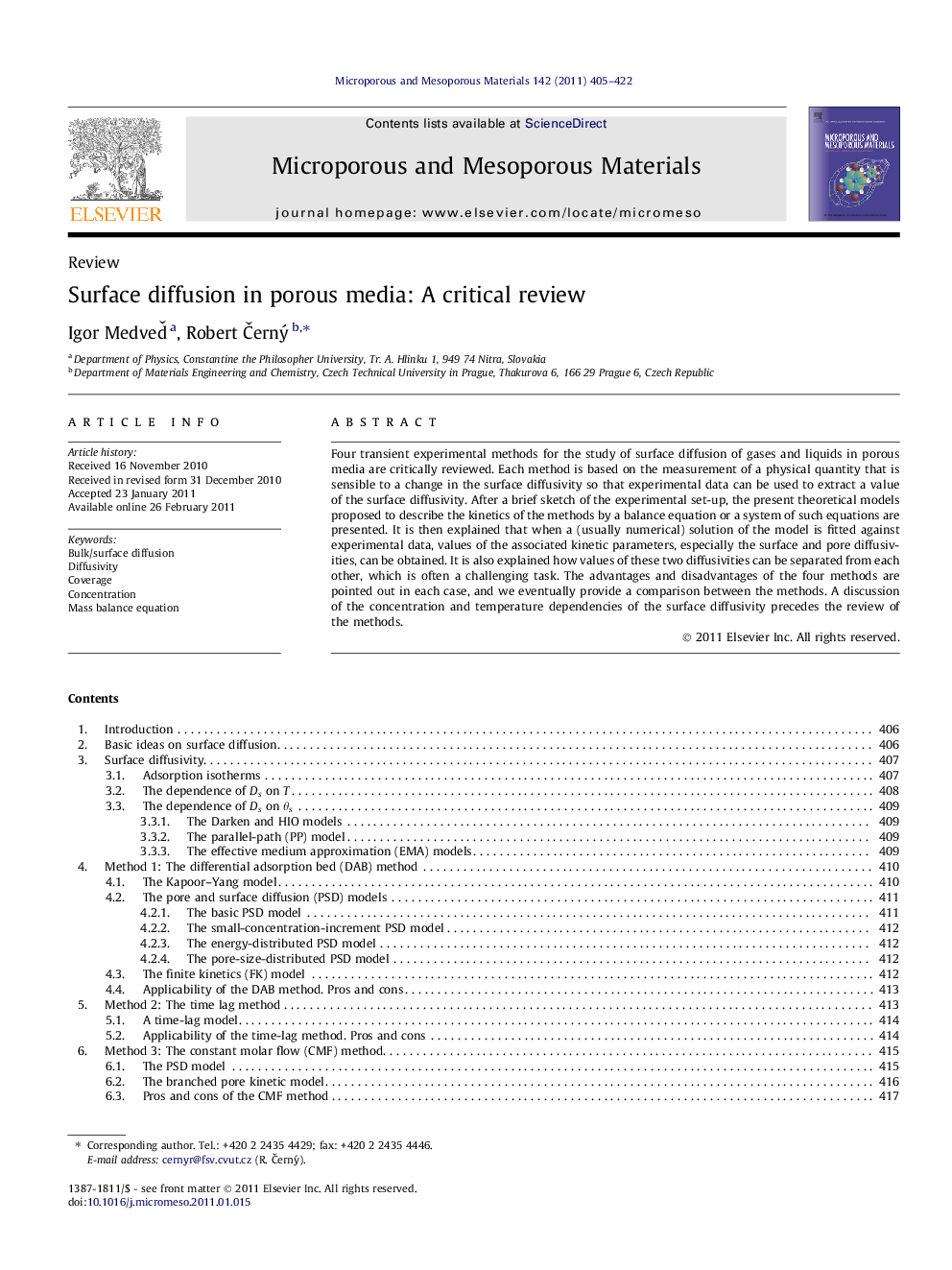| Article ID | Journal | Published Year | Pages | File Type |
|---|---|---|---|---|
| 74454 | Microporous and Mesoporous Materials | 2011 | 18 Pages |
Four transient experimental methods for the study of surface diffusion of gases and liquids in porous media are critically reviewed. Each method is based on the measurement of a physical quantity that is sensible to a change in the surface diffusivity so that experimental data can be used to extract a value of the surface diffusivity. After a brief sketch of the experimental set-up, the present theoretical models proposed to describe the kinetics of the methods by a balance equation or a system of such equations are presented. It is then explained that when a (usually numerical) solution of the model is fitted against experimental data, values of the associated kinetic parameters, especially the surface and pore diffusivities, can be obtained. It is also explained how values of these two diffusivities can be separated from each other, which is often a challenging task. The advantages and disadvantages of the four methods are pointed out in each case, and we eventually provide a comparison between the methods. A discussion of the concentration and temperature dependencies of the surface diffusivity precedes the review of the methods.
Graphical abstractVarious transport mechanisms of adsorbate particles through a pore.Figure optionsDownload full-size imageDownload as PowerPoint slideResearch highlights► Measurement of surface diffusivity in porous media. ► Critical review of four transient methods. ► Corresponding mass transport models presented. ► Concentration and temperature dependence of surface diffusivity discussed.
